I visited a very exciting Willem de Kooning show at Gagosian gallery yesterday that opened in the spring and runs through July 11. It was curated by Cecilia Alemani and gathers together 22 paintings that span de Kooning’s career from the late 1940s through the 1980s, plus two sculptures. Above is a de Kooning painting from 1958 called “Suburb in Havana,” somewhat simpler than a lot of the explosive paintings from this period. Though it is not quite visible in the image above of “Suburb in Havana” that I found online, there is a hint of pink breaking through the blue at the top of this painting. Nobody uses pink quite like de Kooning, not even Pierre Bonnard, so I took a closer shot with my phone at the gallery to give you a sense of the pink co-existing with the blue, emerging slowly, sexily, for there is always sex somewhere in the de Kooning paintings from his prime.
I was knocked out by this show, by its breadth and scope, by de Kooning’s unflagging confidence, his beyond-luscious brush strokes, the unusual combinations of colors. Zowie! I could have stayed all day. I’m not a photographer, but I found myself taking photos of details of the paintings so that you might get a sense of their texture, which doesn’t often come across in reproductions. I loved getting lost in these paintings and wondering how and why he did what he did. There is still life in the Abstract expressionist style he used in his breakthrough work of the post-World War II period; many of the best art shows I have seen in the last decade or two have been from artists, old and young, who work in this mode.
De Kooning has been an artistic hero to me ever since reading a 2004 biography by Annalyn Swan and Mark Stevens that is the gold standard for that sort of endeavor; I own this book, and I want to re-read it now. De Kooning lived about four or five lives or more and always came back to his work with fresh determination, virility, and stamina; even a slow slide into dementia didn’t stop his arms and hands from doing what they were made to do.
The Gagosian gallery was swarming with people yesterday looking at these de Kooning paintings from all periods of his life. The show doesn’t shy away from his late paintings, as some exhibitions have done, and there are a few early paintings just to show you where he came from as he paid his dues and lived on nothing in Chelsea in Manhattan in the 1930s at 156 West 22nd Street, not too far from the Gagosian gallery on 24th Street.
The late paintings do seem sadder when they are not segregated to themselves; I have seen and enjoyed de Kooning shows that only showed his late paintings from the 1970s and ‘80s, but making us see several of them in concert with the great middle-period work provides a kind of jolt that feels right, that feels very de Kooning-ish, for he shied away from nothing, ever. The work from his prime in the 1950s and ‘60s is gobsmackingly phallic; there is no other way of putting it. The waning of his powers in the later years, the sense of softening and drooping and drifting away, has never come across as honestly and touchingly as it does in this show. Yet I have to admit that when I look at all the photos I took yesterday at the gallery, very few are of the stripped-down later paintings. I kept wallowing in the work from the 1950s and ‘60s.
I noticed that there was a very attractive young couple, a man and a woman, looking at the 1950s paintings in the large main room in back with growing delight; he was holding her from behind, and I could tell that their excitement was starting to get libidinal as well as artistic. That’s the kind of work this is. Go see the show if you can, and get lost in some of his brushstrokes below. The thickness of the paint….every time I looked at these as I was quickly putting this together last night and this morning, I would get so excited that I would take in a deep breath. And they’re even better in person. I’ve included photos of the two cocky sculptures at the end, plus images of a young de Kooning, de Kooning in his prime with his vital and fascinating wife Elaine, and an older de Kooning with Elaine, who came back to him at the end of his life after a time apart.





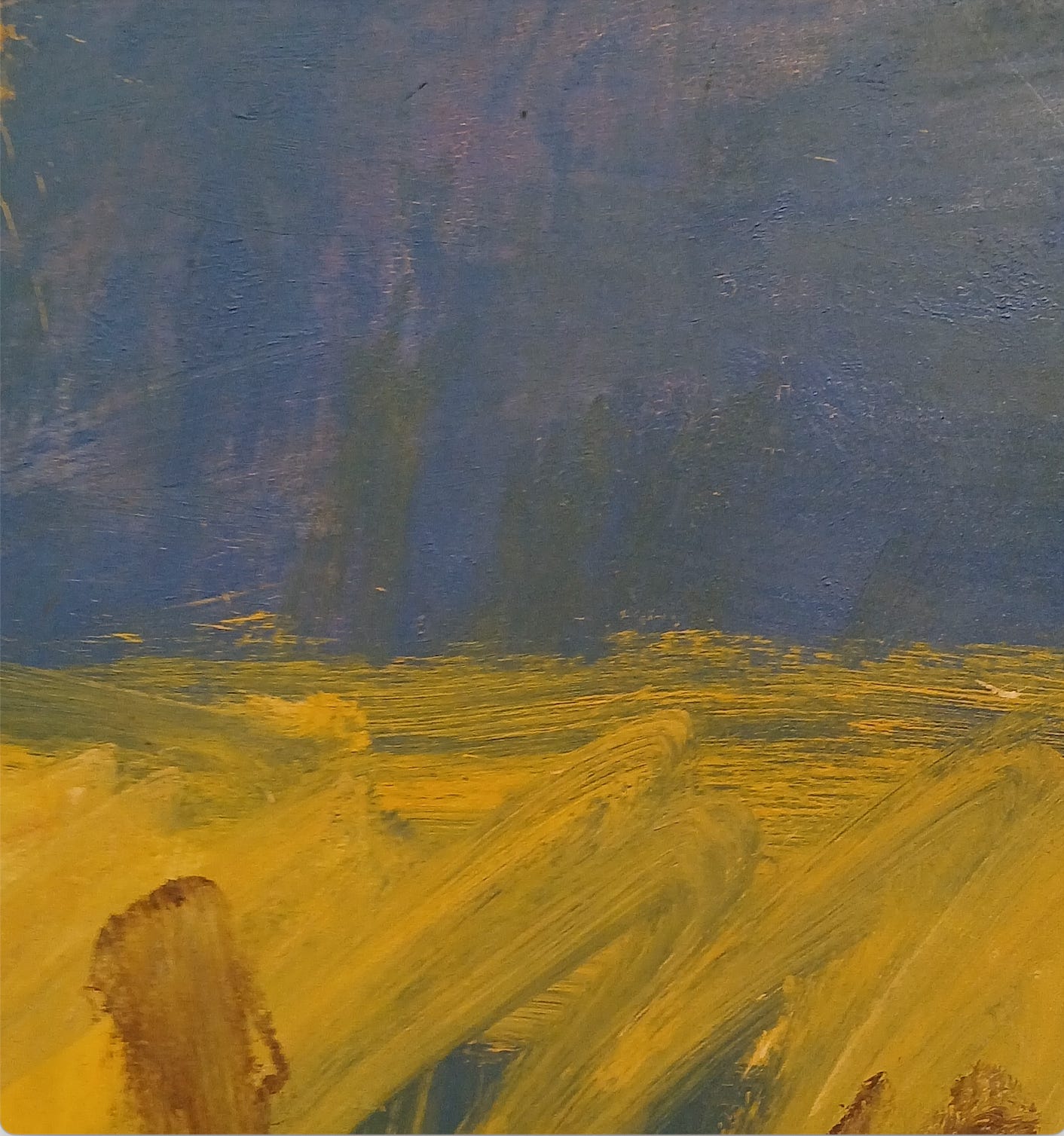

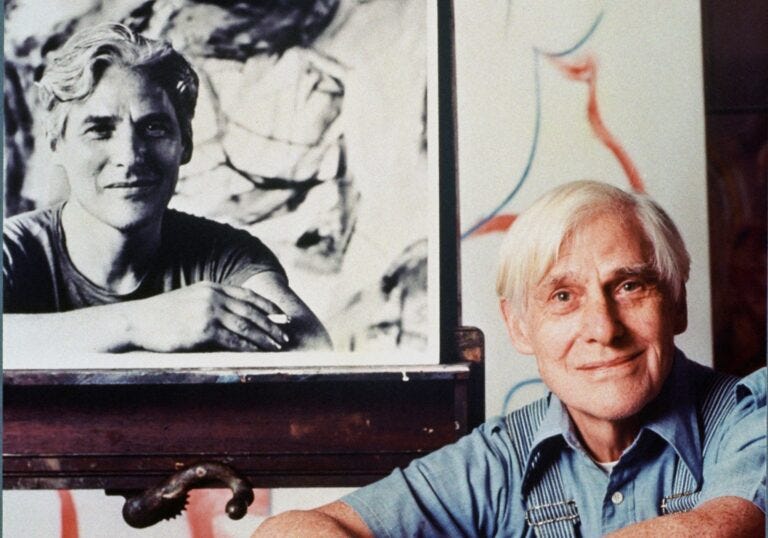
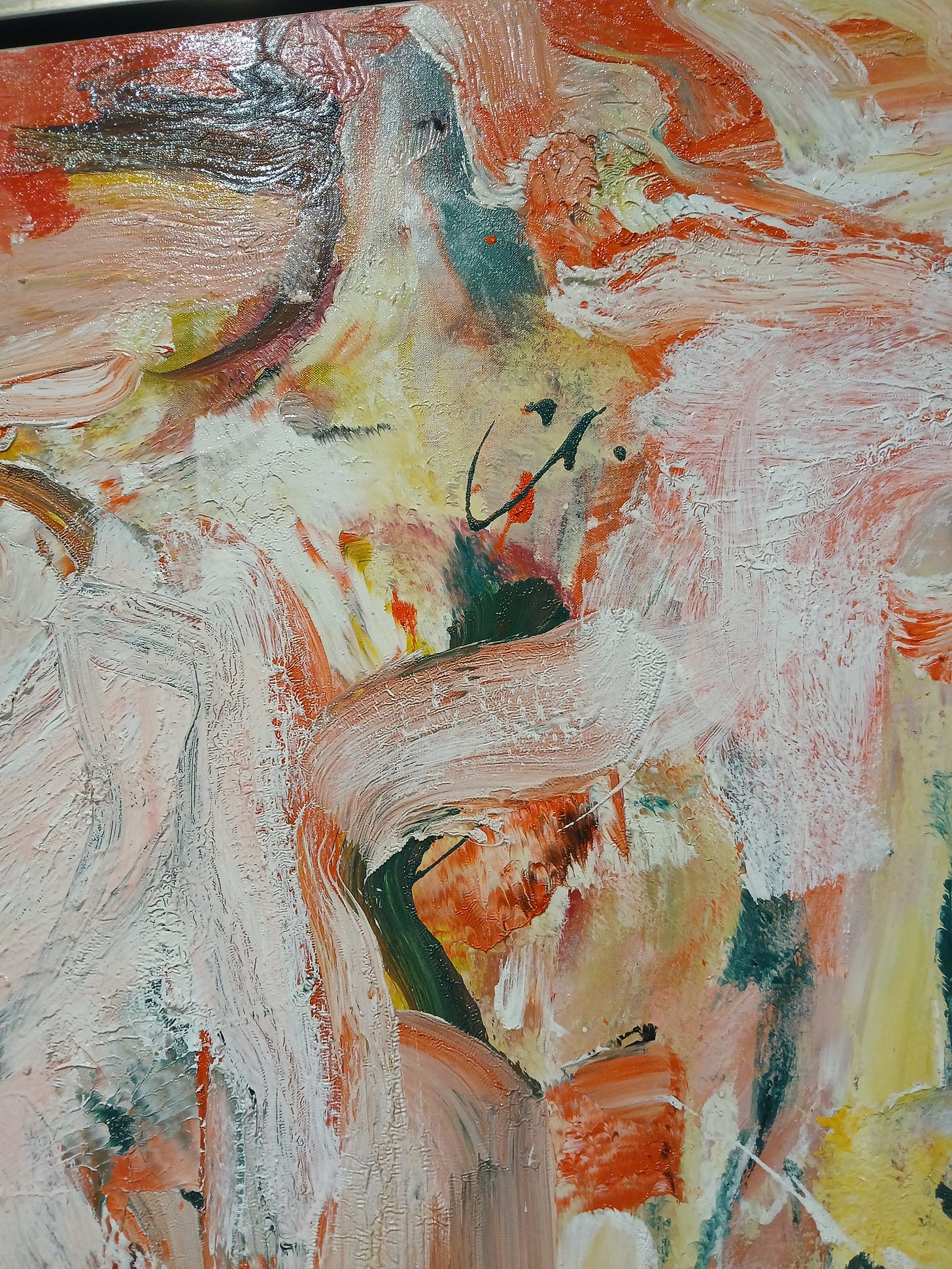
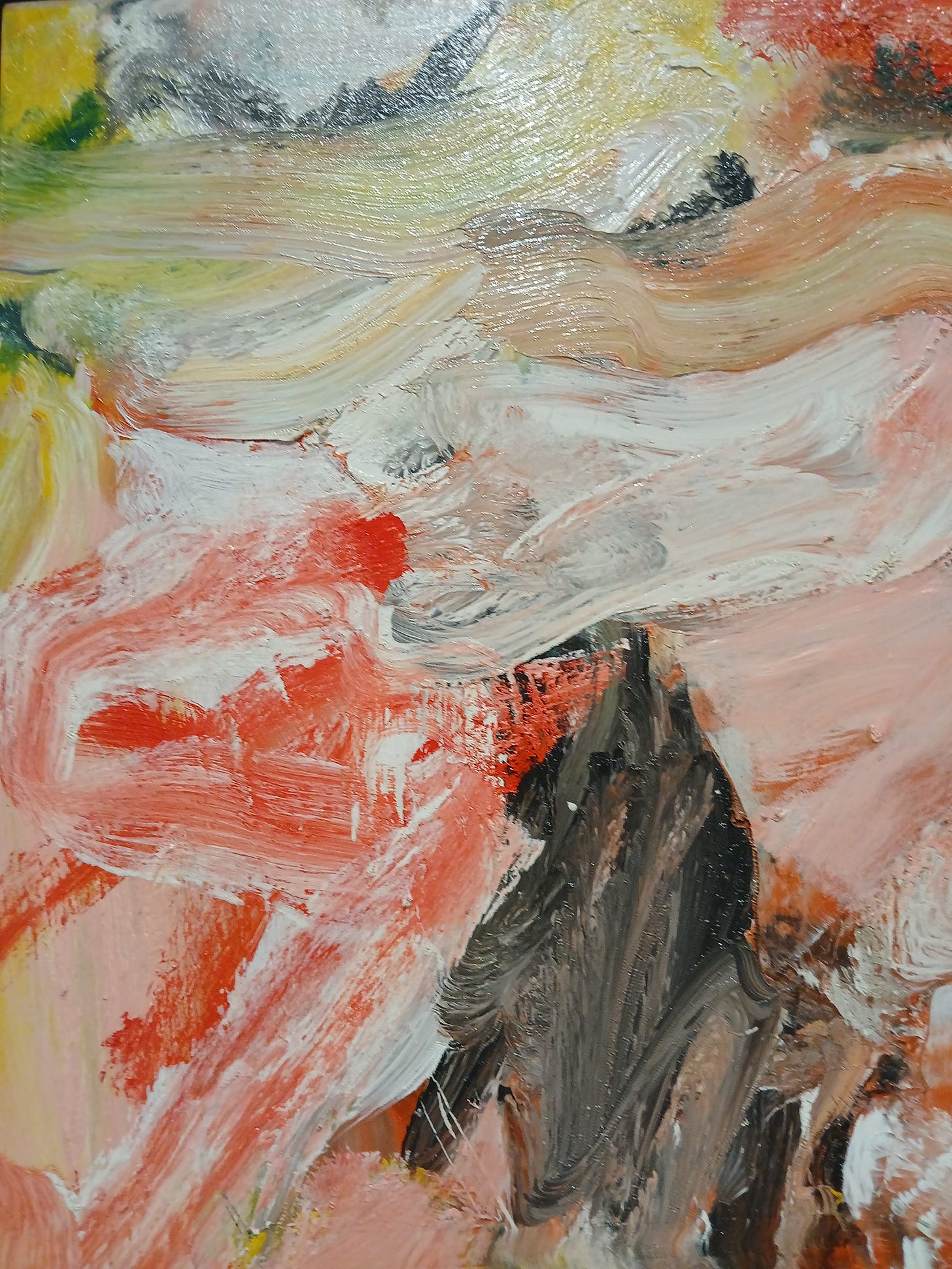
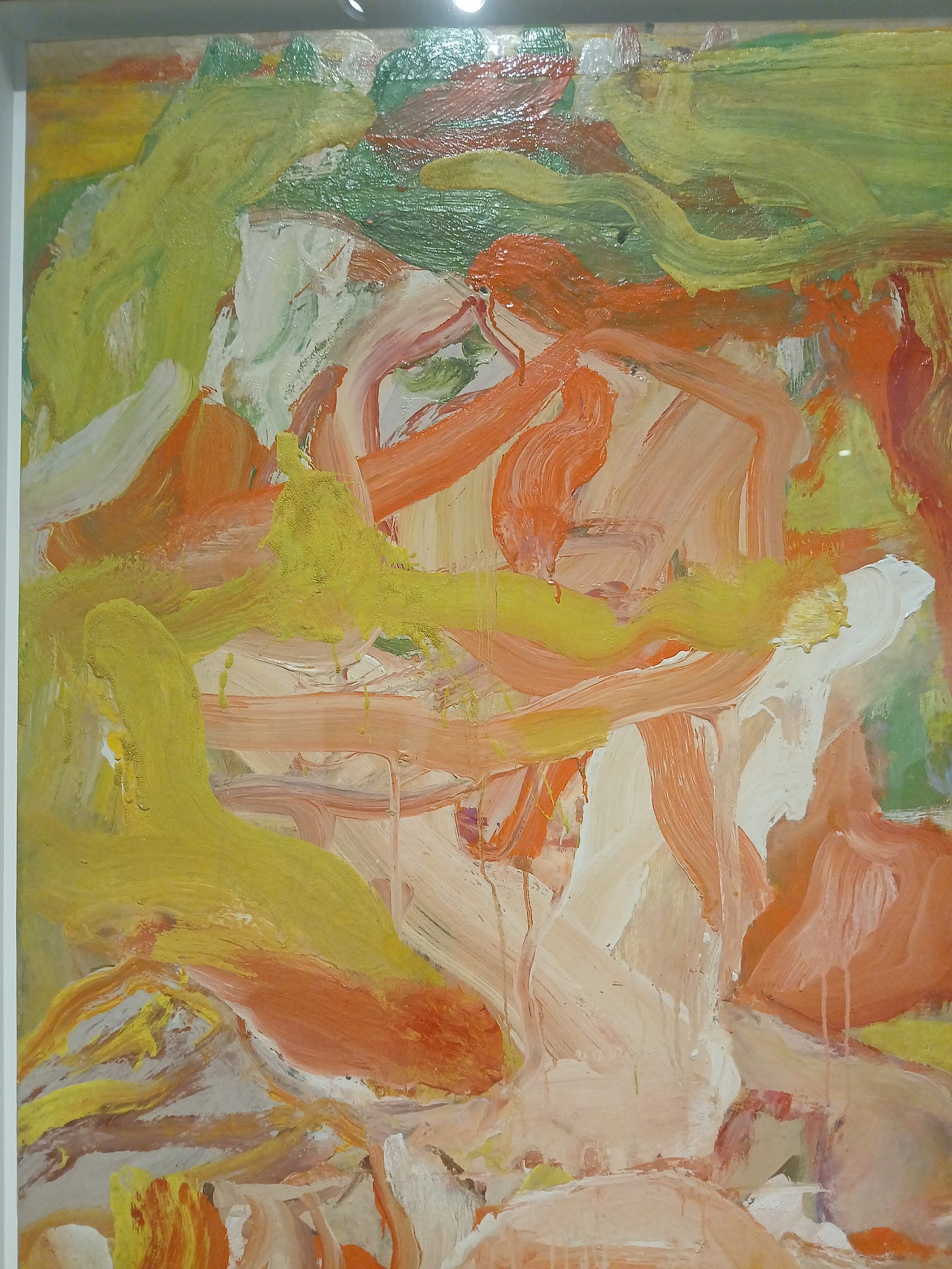
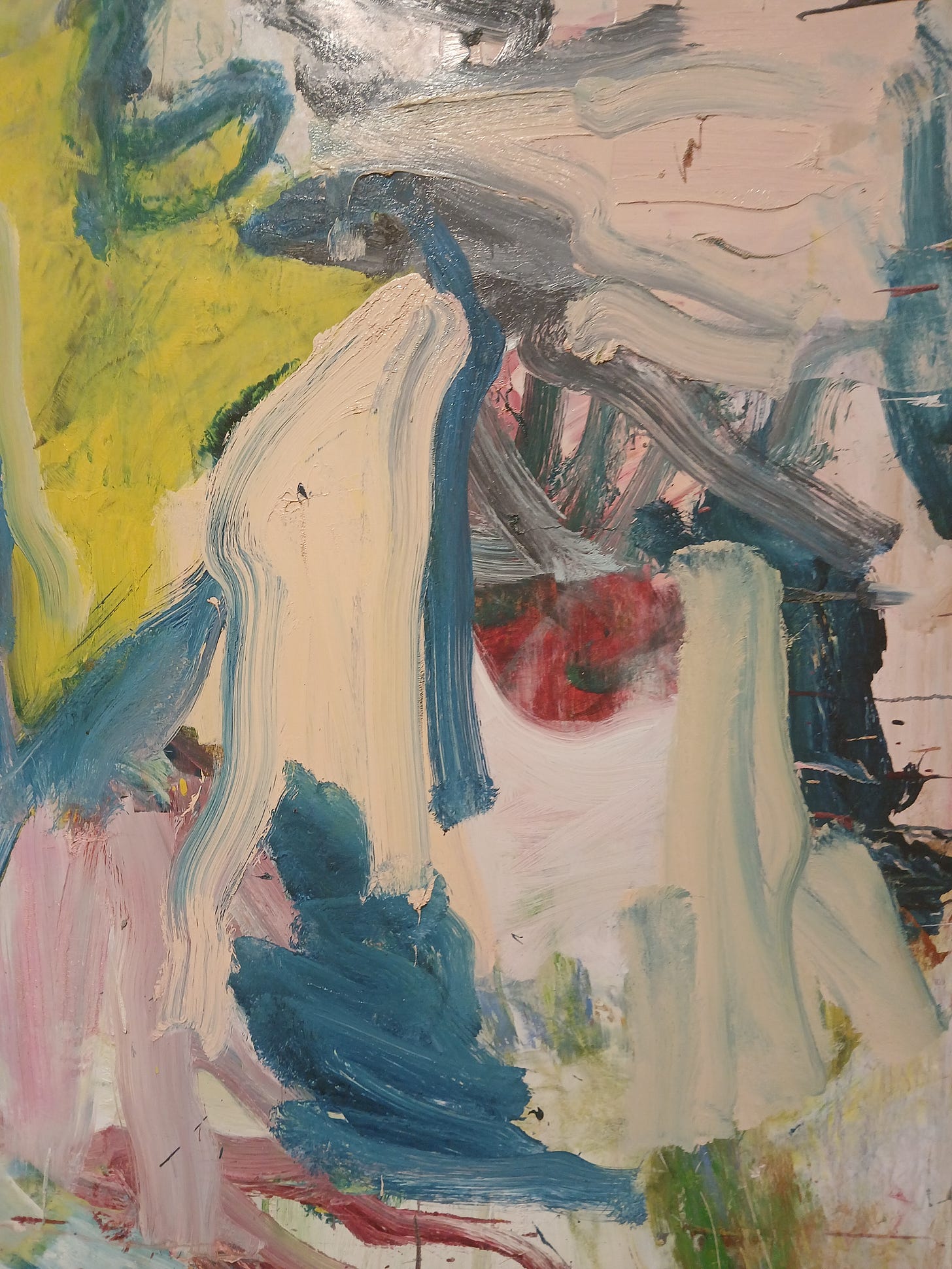
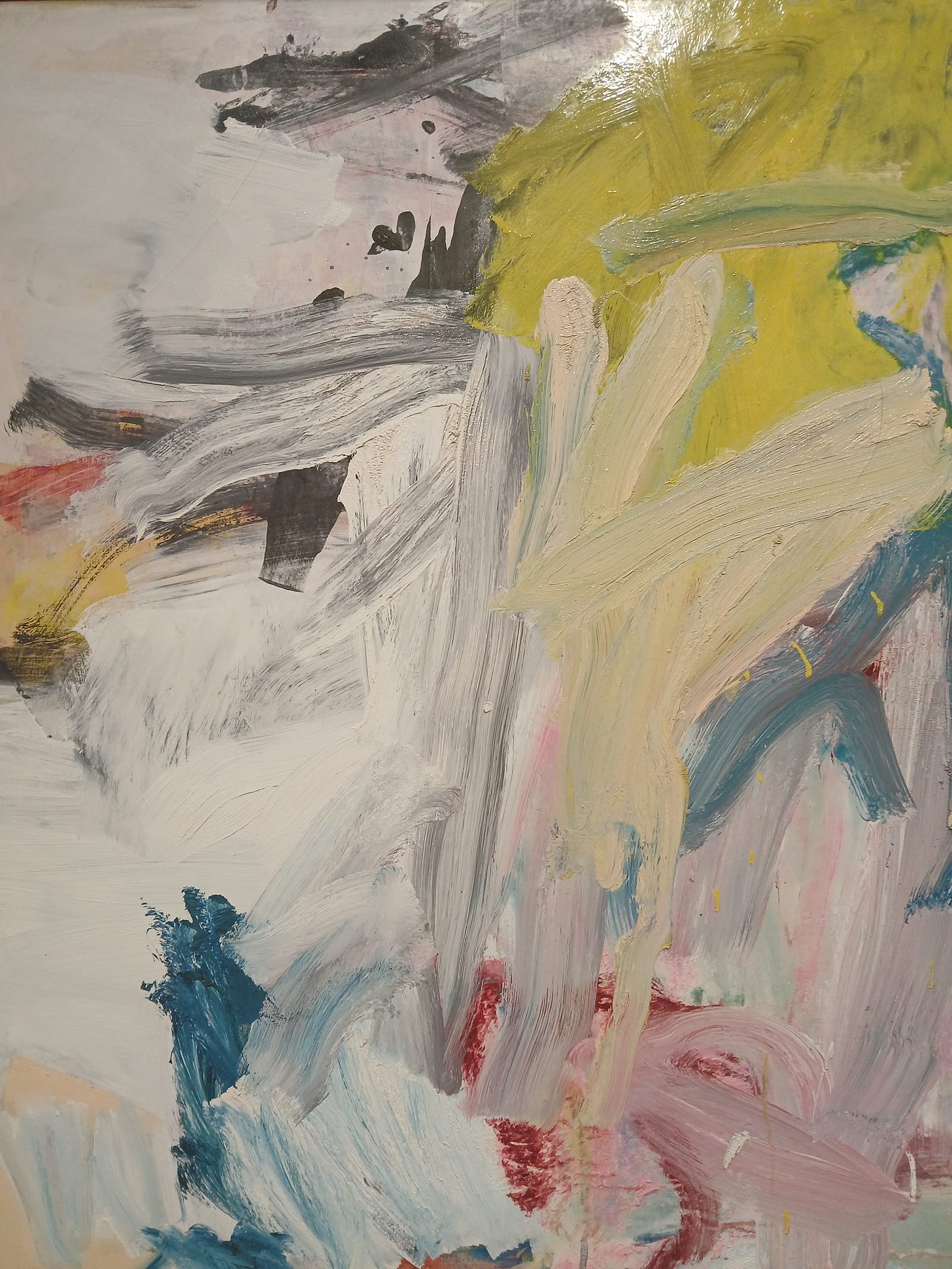
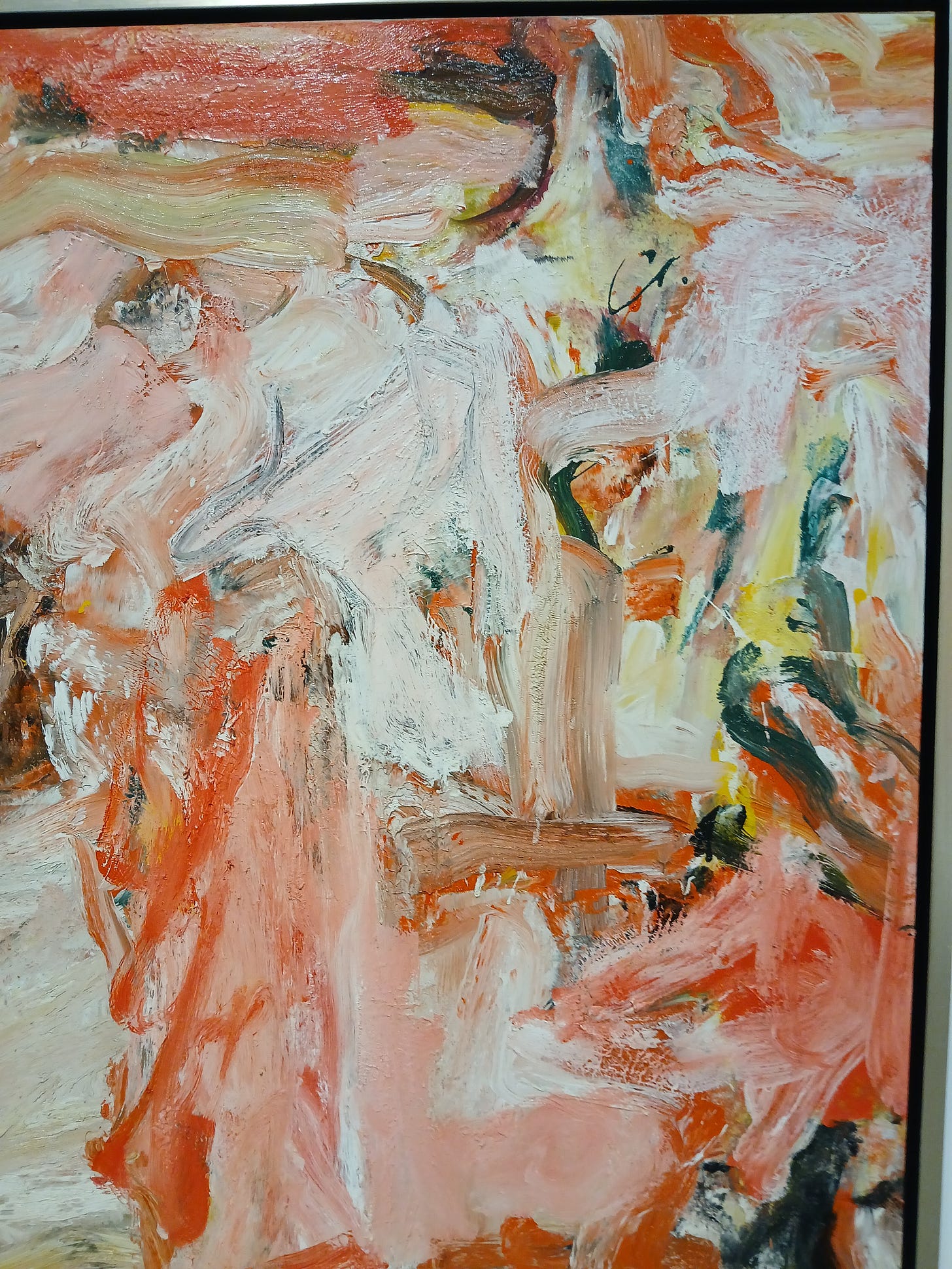


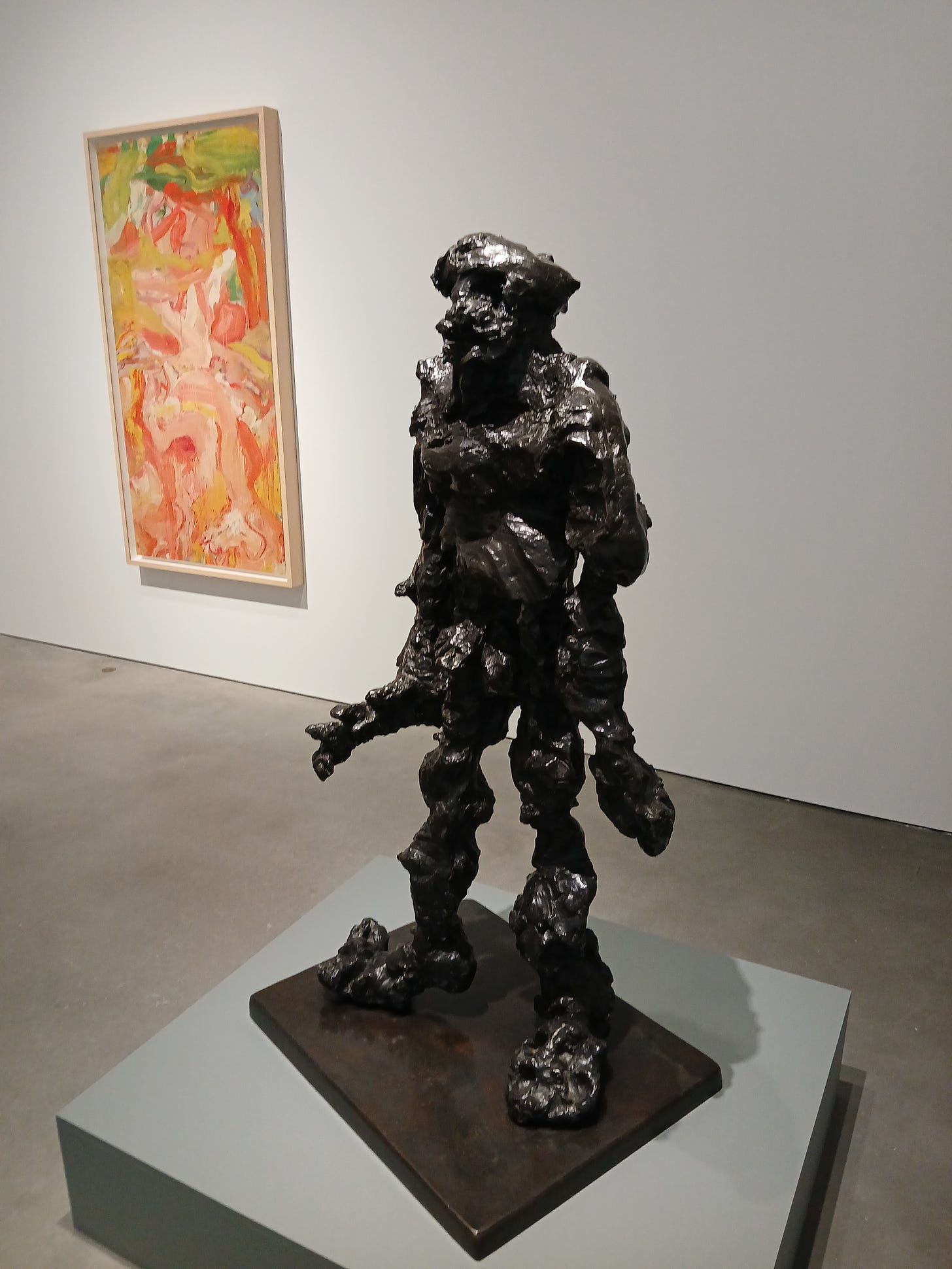
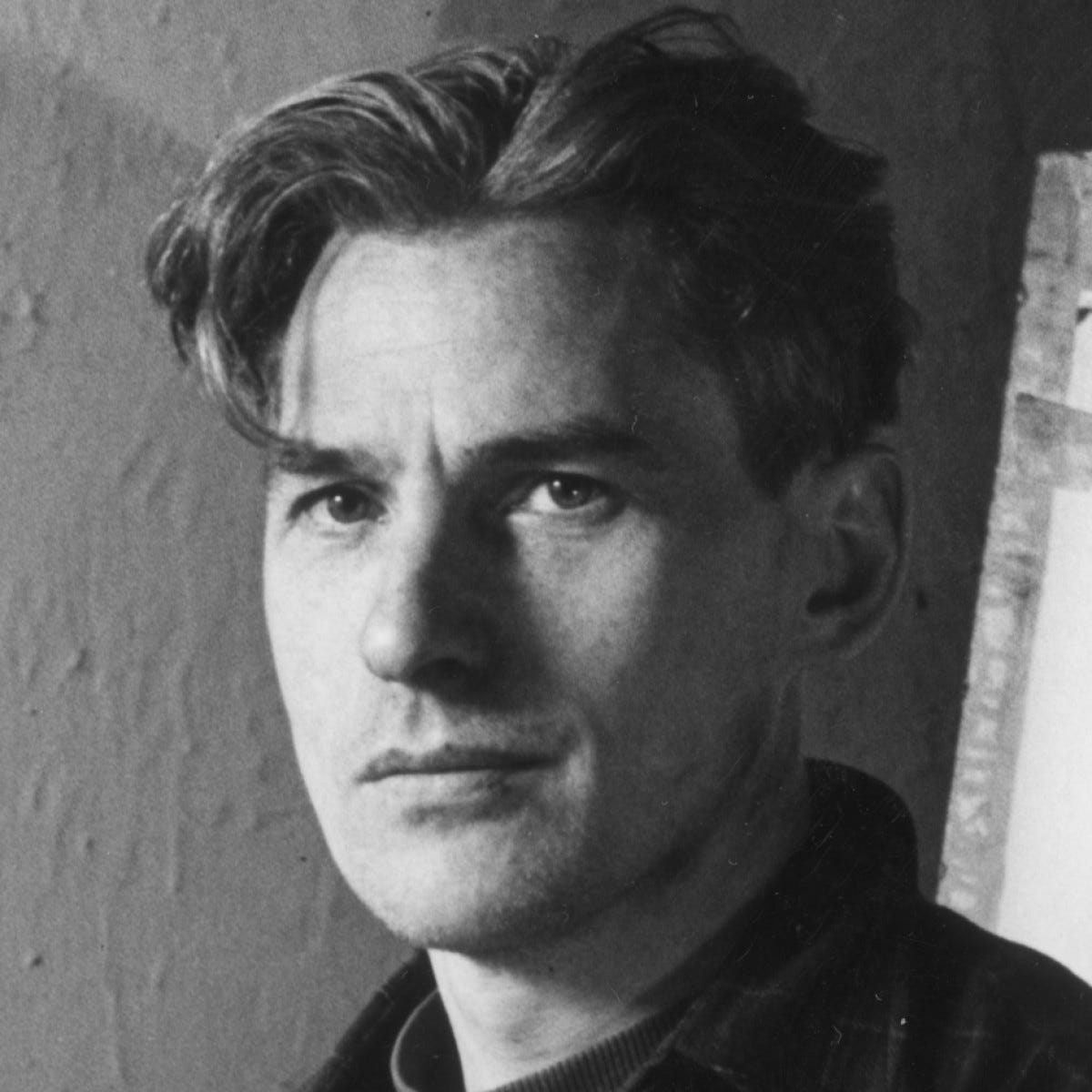

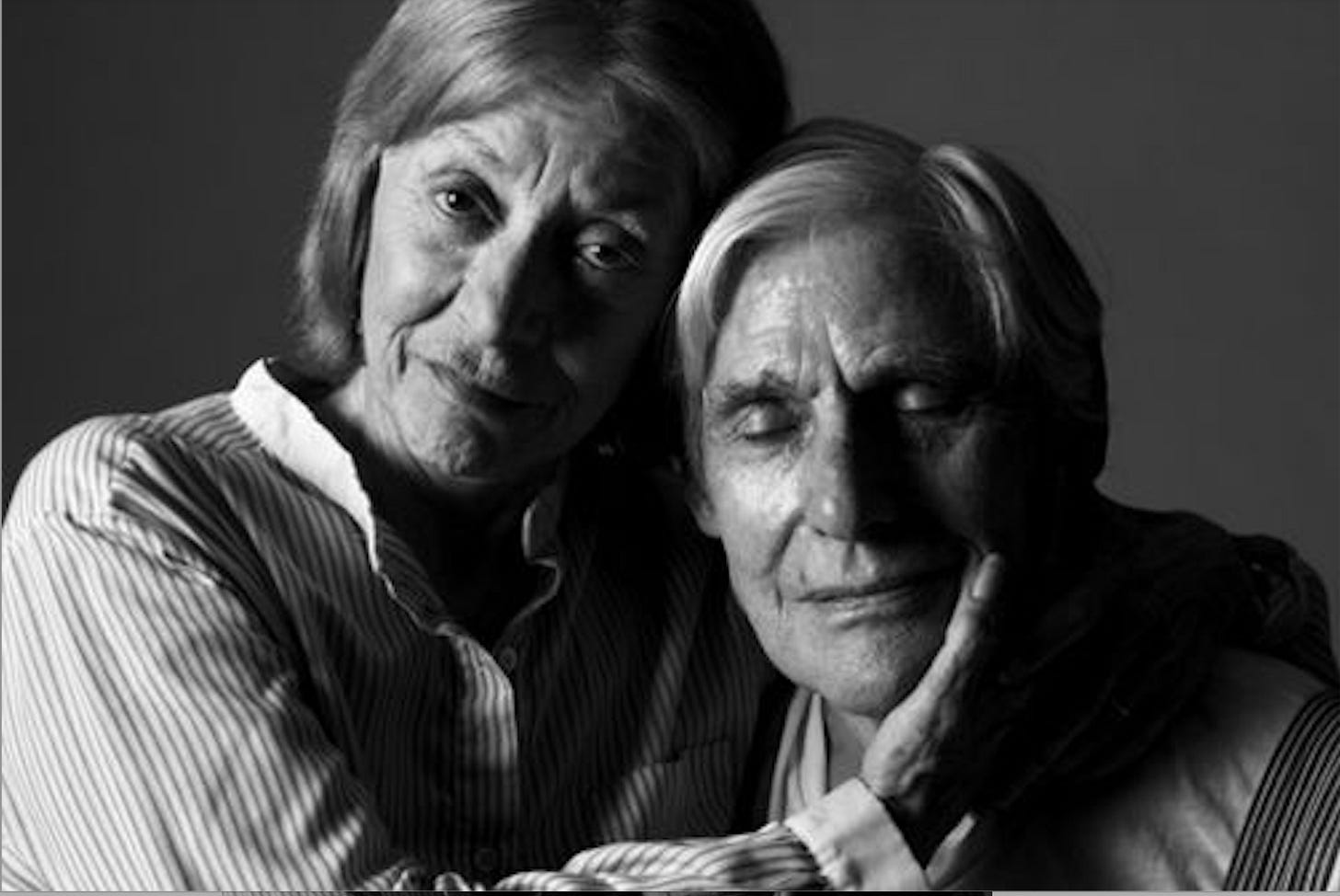
You're very welcome, Mark---:)
Thank you for sharing all this with us.